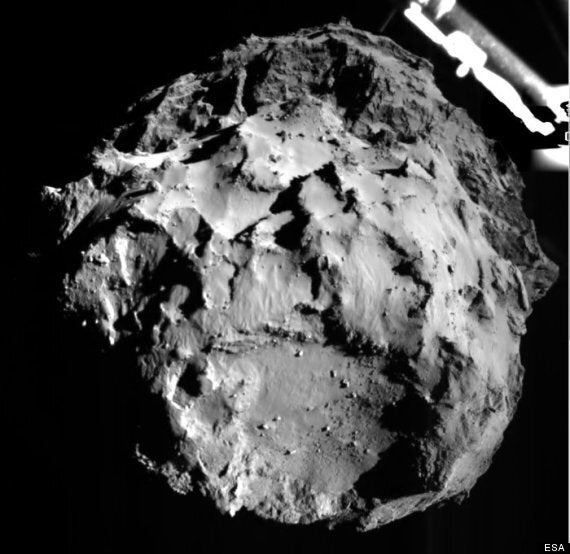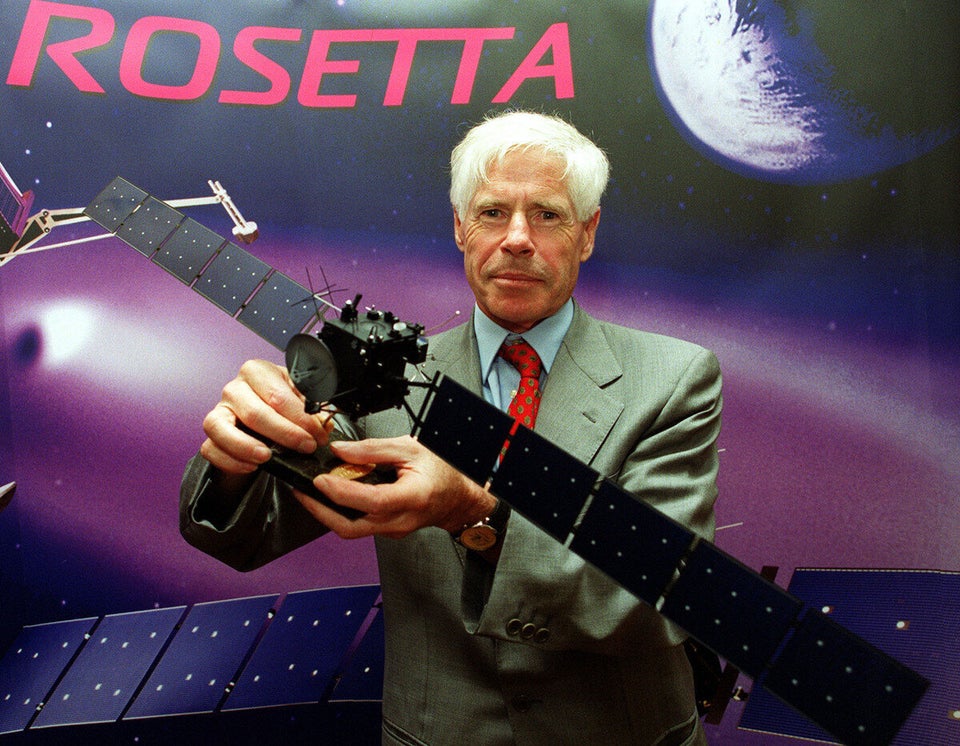UPDATE: The BBC is reporting that the Philae lander is now "stable" and is sending back images to ESA. Until ESA makes an official statement we'll take that as a good sign.
The world of science was set alight on Wednesday after humanity landed on a comet for the first time.
Now it's waking up to find that we actually landed on it three times - by accident.
Problems with the Rosetta space craft's Philae lander - which are still being investigated by the European Space Agency - meant that the probe actually bounced at least once on reaching the surface.

Above: the Philae lander took this picture from 3km above the surface of the comet.
Because the comet is so small, it has an extremely low gravitational pull. The probe was designed with a thruster on top to counter any bounce, and with harpoons to dig into the surface, but neither system worked. Instead the probe bounced and landed again at least once - probably twice - before coming back down to rest.
Unfortunately it is not clear what state the probe is in, or whether it might even be upside down. ESA is still looking at the data sent back so far by Philae, and is set to update the world at a press conference around 12pm UK time.
Regardless, the landing still represents a huge win for the agency, marking the first time that a lander has successfully made a soft descent onto a comet's surface.
The 10-year, billion-euro mission took Rosetta - which is still operational in orbit around the comet - on a 6.4-billion kilometre journey around Mars, Jupiter and eventually the comet itself, at speeds of more than 40,000 km/hour.
It was hailed by everyone from NASA to astronauts aboard the International Space Station as a remarkable moment for human exploration.
